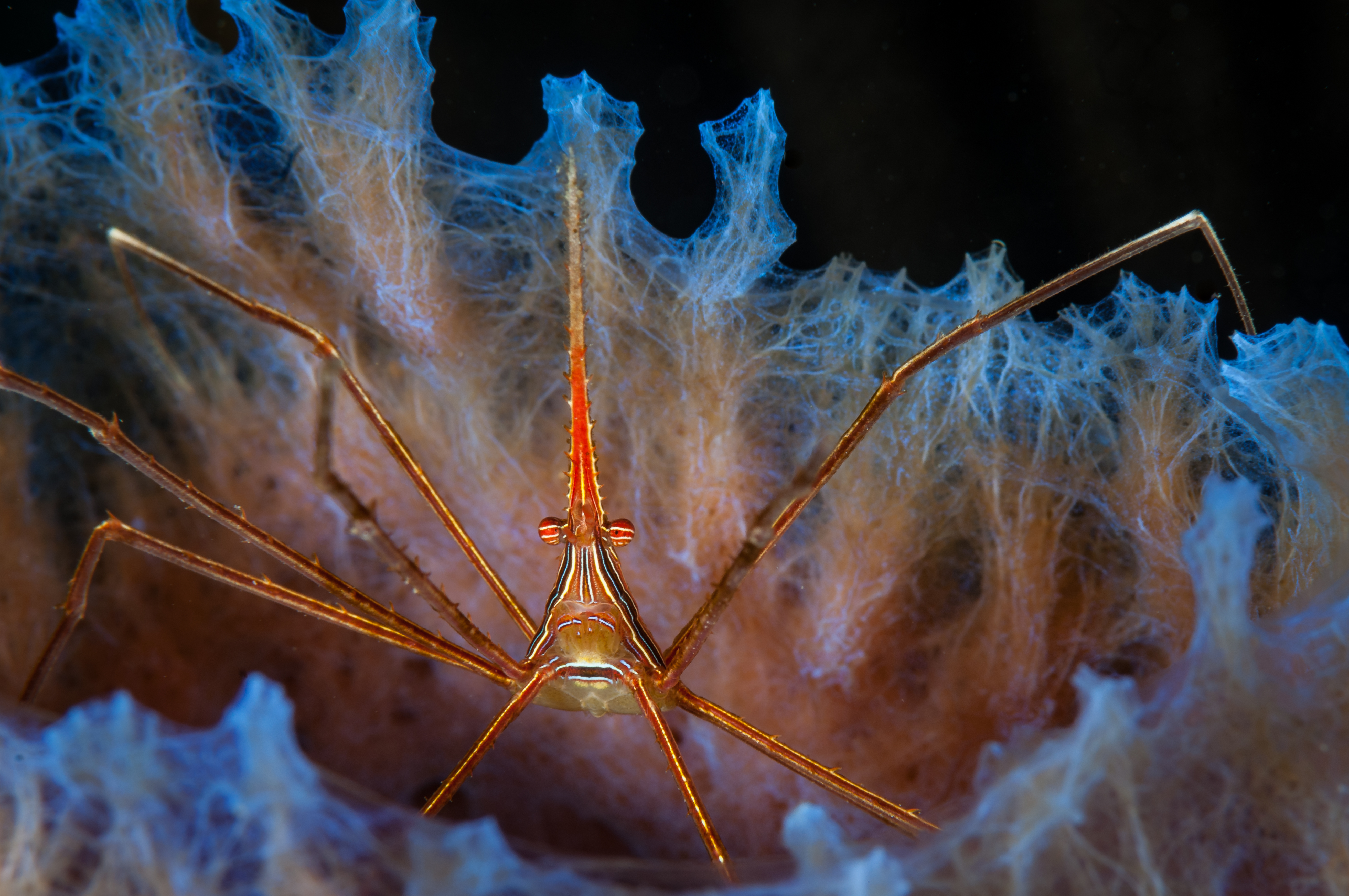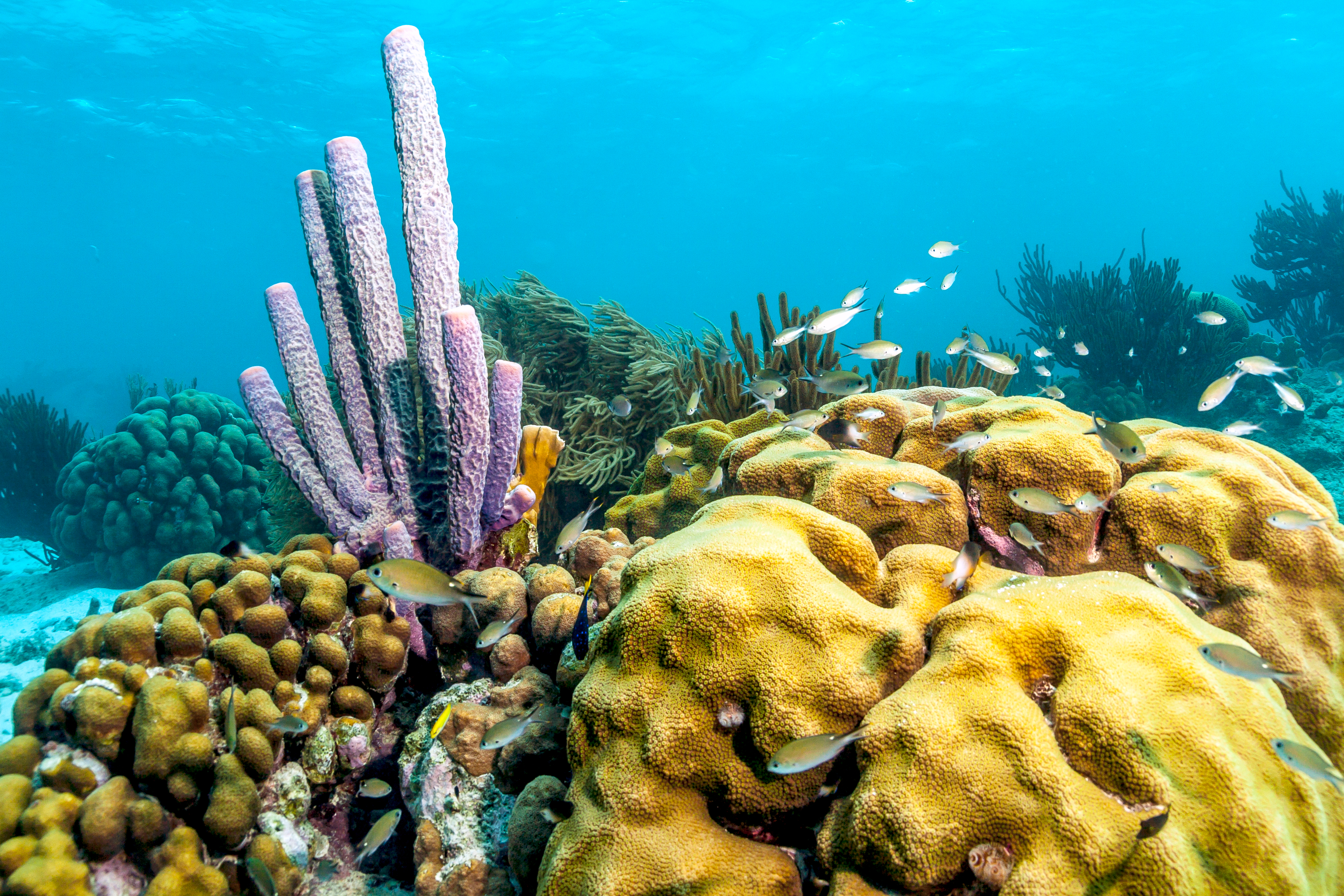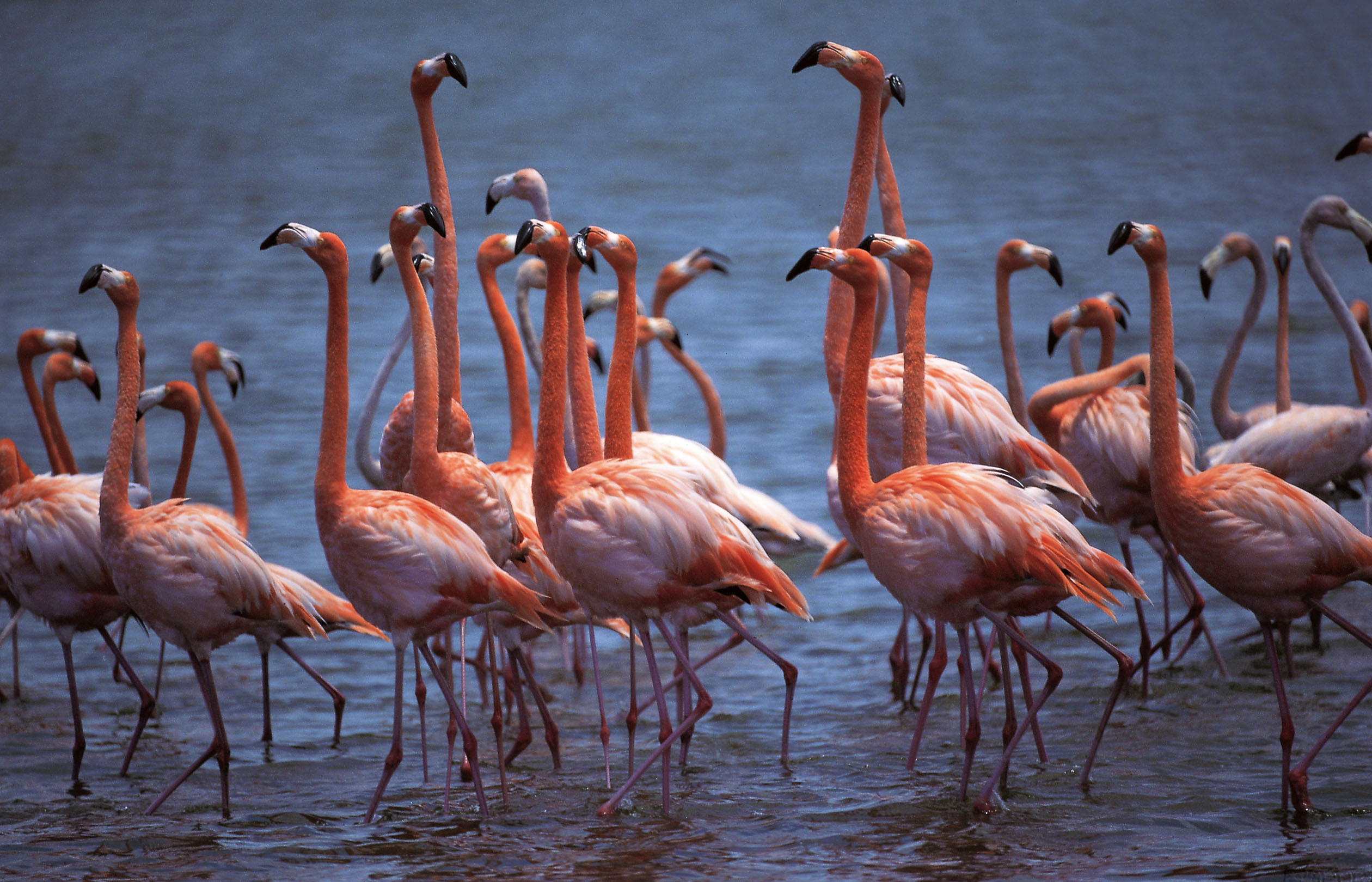Bonaire is one of the few Caribbean destinations where you can dive 365 days of the year and yet experience a pristine underwater environment thriving with vibrant tones and encrusting corals on every rock and wreck you will find.
Most of the dive sites around Bonaire are accessed from shore, making this destination ideal for unguided diving. Hire a truck, pick your tanks from the dive shop, and depart on your underwater adventure with your buddy without having to rely on group diving restrictions. Allowing you to dive where you want when you want around an island that offers an uncomplicated, stress free diving freedom appeal.

Total Diving Freedom has always been the concept of our preferred resort, the Captain Don’s Habitat. Over 50 world-class dive sites are within a 15 minute boat ride. Diving Freedom here means 24 hours a day, 365 days a year with no rush or anxiety. Take a giant stride off the resort’s divers-only pier “baby dock” and you’re already looking at clusters of starlet coral, surrounded by colourful wrasse and gobies. The drop-off starts in 9 metres, so it is only a few kicks away!
All the waters around this beautiful island are designated as a Marine Park, which means anchoring, spearfishing or touching the corals is prohibited. This also means there is an entrance fee of $25 per diver to access the park. All island dive operators are also required to provide a brief orientation to anyone who has not been to Bonaire within the same calendar year before allowing divers in the water.A shore warm-up dive on the house reef is also required by the Bonaire National Marine Park prior to any other diving.
Bonaire’s Top 3 Dive Sites
Bari Reef is one of the most visited reefs off the Bonaire coast, and for good reason. For starters, this dynamic reef can be found just offshore near the capital of Kralendijk so it is relatively easy to access. A local dive operator is available for anyone who wants to enjoy a guided Bari Reef dive, though it is also possible to enter the water on your own. On solo dives, all you will have to do is grab your gear and get down to the beach dock near the Sand Dollar Condominium Hotel. This reef is noted for its colourful array of marine life and there are plenty of corals and sponges to admire. Types of fish range from trumpetfish and trunkfish to parrotfish and moray eels. Tarpon are also known to frequent the waters around Bari Reef, as are seahorses and octopuses among a variety of other fascinating creatures.

Hilma Hooker came to rest on her starboard side in 18 to 30 metres of water and proclaims to be one of Bonaire’s premier dive sites. She hosts an abundance of marine life including star and pillar corals, tube sponges and crinoids that cling to the superstructure. This elite ecosystem in Bonaire’s warm, clear waters provides a perfect balance of temperature, light, food and grazing fish. Countless species cruise the wreck’s perimeter including jacks that veer in close and then head off toward an adjoining coral reef. Blue-head wrasse feed on algae that grows on the mooring buoy ropes; squirrelfish swarm around the capstan on the upper deck, while black groupers and graysbys hide among the shadows deep in the cargo holds. Spider crabs dwell next to sea anemones in symbiotic harmony on davits that hang over the main deck and coral-encrusted ladders and railings teem with sergeant majors and blue parrotfish.
Karpata is one of the most beautiful dive spots in Bonaire. The dive spot is well known for its good accessibility and beautiful underwater panoramic views. This makes the shore dive site ideal for underwater photography. The dive site is located on the north east coast of Bonaire. Along the beautiful coastal road lies a house called Karpata, this is how the dive site obtained its name. You access the dive site by getting into the water through the remainders of an old pier. You will see that the drop off is perpendicular on certain spots; if you descend along the reef, you encounter a number of caves - here you'll find many species of fish including emperor fish, parrotfish, triggerfish, snappers and more.
On your rest day, we strongly recommend a visit to the Pekelmeer Flamingo Sanctuary, one of the four areas in the world where flamingos breed. The pools here appear in pink against the white salt flats because an abundance of tiny rosy brine shrimp live in the water. The Sanctuary is located on the vast salt pans at the southern end of the island and home to over ten thousand flamingos. Tourists are not allowed in the sanctuary, but the birds can be watched with binoculars from the road or nearby Pink Beach.
